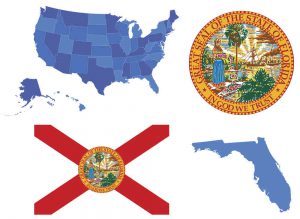Negligence Actions Under Florida Law
 Michael Babboni
Personal Injury
Although the application of negligence law has changed over the centuries, the core concept itself is one of the oldest ideas in law. The central idea of negligence is that someone who does not exercise reasonable care in taking an action should be liable for damages or injuries to another that result from those actions.
Michael Babboni
Personal Injury
Although the application of negligence law has changed over the centuries, the core concept itself is one of the oldest ideas in law. The central idea of negligence is that someone who does not exercise reasonable care in taking an action should be liable for damages or injuries to another that result from those actions.When a drunken driver runs off a neighborhood road and crashes into a garage door, the application of negligence doctrine is pretty clear cut. The drunken driver should be liable for damages caused to the garage door because he failed to operate his car in a reasonable manner by driving drunk.
But what happens when an injury occurs because both parties have failed to act in a reasonable manner? For example, imagine a situation in which two cars are approaching an intersection with a traffic signal from perpendicular directions. One of the drivers runs the red light, and the other driver crashes into it. The second driver could have stopped in time, but failed to do so because he was looking at his phone.
Do you know what happens in this situation? Surprisingly, the answer depends on where the accident occurred. If you’re in Florida, there’s a special doctrine called comparative negligence that can complicate the liability analysis in the aftermath of an accident.
The Three Negligence Regimes In America
In America, there are three legal doctrines that govern who is liable for an accident in which both of the injured parties were at fault:
- Pure Contributory Negligence – This is the oldest and harshest of the doctrines. In states that still use the pure contributory negligence doctrine, both parties are essentially precluded from recovering damages from each other. Even if the suing party was only 5% responsible for the accident and the other party was 95% responsible, the suing party would not be allowed to recover any damages.
- Pure Comparative Negligence – In Florida, a pure comparative negligence state, the suing party may only recover damages to the extent he was not at fault. This can lead to some odd results. For example, if the suing party was 95% at fault, and the other party was 5% at fault, the suing party could still recover 5% of the damages he suffered.
- Modified Comparative Negligence – Modified comparative negligence is the most recent of the doctrines. It is basically the same as pure comparative negligence, but it precludes the above situation by barring recover if you were just as or more responsible for the accident.
So what happens in the above example if the accident occurred in Florida? Unfortunately, the answer still isn’t clear cut. Florida is a no fault auto insurance state. So, depending on the specific terms of the insurance policies involved, one or both of the parties may not even be able to sue at all.
Even if the terms of the auto insurance policies will allow a law suit to go forward, apportioning fault is a difficult process. In the example above, it is extremely difficult to simply pull percentages out of the air, and say the driver that ran the red light was 60% at fault while the inattentive driver was 40% at fault.
Ultimately, an experienced personal injury lawyer will have to use police reports, insurance reports, statistics, and collision experts to convince a jury to apportion the fault in a particular way.
Even after apportioning damages, determining the amount of damages can be difficult. Medical bills, lost wages, and other monetary damages are easy to calculate, but other damages such as pain and suffering, emotional distress, and loss of consortium are much harder to quantify. Only an experienced personal injury lawyer will know how to do this.
